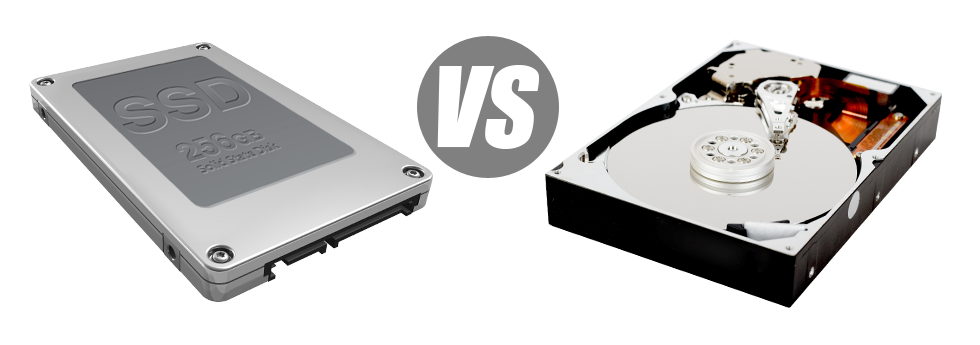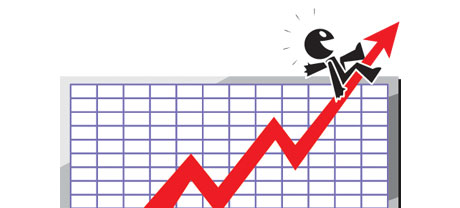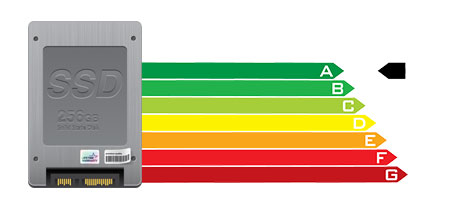For decades there was only 1 efficient solution to store information on a personal computer – using a disk drive (HDD). Then again, this sort of technology is presently displaying its age – hard disks are loud and sluggish; they are power–hungry and have a tendency to produce lots of heat in the course of serious procedures.
SSD drives, on the contrary, are extremely fast, use up a lesser amount of power and tend to be much cooler. They furnish an exciting new solution to file access and storage and are years in front of HDDs with regard to file read/write speed, I/O performance and then power efficiency. Discover how HDDs stand up up against the modern SSD drives.
1. Access Time
SSD drives have a brand–new & impressive way of data storage in accordance with the utilization of electronic interfaces instead of any moving parts and rotating disks. This completely new technology is much quicker, enabling a 0.1 millisecond data accessibility time.
The concept behind HDD drives times back to 1954. And although it has been substantially polished progressively, it’s nevertheless no match for the inventive concept behind SSD drives. With today’s HDD drives, the very best data access rate you can attain varies in between 5 and 8 milliseconds.
2. Random I/O Performance
The random I/O performance is critical for the performance of a data storage device. We’ve run substantial testing and have confirmed an SSD can deal with at least 6000 IO’s per second.
Having an HDD drive, the I/O performance steadily raises the more you use the hard drive. However, just after it gets to a specific cap, it can’t go swifter. And because of the now–old concept, that I/O limitation is a lot below what you could get with an SSD.
HDD can only go as far as 400 IO’s per second.
3. Reliability
SSD drives do not have virtually any rotating parts, which means that there’s much less machinery in them. And the fewer actually moving elements you will discover, the lower the probability of failure will be.
The typical rate of failing of an SSD drive is 0.5%.
As we have mentioned, HDD drives rely upon rotating hard disks. And something that utilizes lots of moving parts for extented intervals is more prone to failure.
HDD drives’ common rate of failure varies somewhere between 2% and 5%.
4. Energy Conservation
SSDs don’t have any moving components and require minimal chilling energy. They also need not much power to function – trials have revealed that they can be powered by a standard AA battery.
As a whole, SSDs take in between 2 and 5 watts.
HDD drives can be infamous for getting noisy; they are at risk from getting too hot and if there are several hard drives inside a server, you have to have an additional cooling system used only for them.
All together, HDDs take in somewhere between 6 and 15 watts.
5. CPU Power
The faster the data file access rate is, the quicker the data requests can be adressed. This means that the CPU will not have to reserve allocations expecting the SSD to reply back.
The regular I/O delay for SSD drives is merely 1%.
By using an HDD, you will need to dedicate additional time anticipating the outcomes of one’s data ask. It means that the CPU will stay idle for much more time, looking forward to the HDD to respond.
The typical I/O delay for HDD drives is about 7%.
6.Input/Output Request Times
It’s time for some real–world illustrations. We ran a full system backup on a server only using SSDs for file storage uses. During that operation, the regular service time for any I/O request stayed below 20 ms.
Weighed against SSD drives, HDDs provide noticeably sluggish service times for I/O requests. During a web server backup, the standard service time for an I/O call ranges between 400 and 500 ms.
7. Backup Rates
You can check out the real–world great things about using SSD drives every single day. For example, with a hosting server designed with SSD drives, a complete back up will take only 6 hours.
On the other hand, with a hosting server with HDD drives, an identical backup could take 3 to 4 times as long in order to complete. A full backup of an HDD–powered server usually takes 20 to 24 hours.
Should you want to straight away add to the performance of your respective web sites without having to modify just about any code, an SSD–operated web hosting solution is a excellent alternative. Check our shared plans – our solutions have swift SSD drives and are offered at good prices.
Hepsia
- Live Demo
Service guarantees
- Each of our Virtual Private Servers is configured for you at no extra cost. 99.9% network uptime. Full root server access privileges.
Compare our prices
- Effortlessly examine the allocations and tools provided by our Virtual Private Servers. Find which VPS Web Hosting setup provides you with everything that you’ll need to take care of your dynamic online presence effortlessly.
- Compare our hosting plans
Contact Us
- Get in touch with us around the clock by email or by using the extra–fast ticketing platform. Our techs are prepared to respond to all of your queries within just 60 minutes.














